Earlier this summer, Editor Anna Leahy’s craft essay about punctuation in poetry appeared at Waxwing. This essay was originally developed as a presentation for the Association of Writers and Writing Programs Conference (but was not presented because of the pandemic). Leahy opens:
As a poet, I’m intrigued by the tension between the clarity of standard grammar and the innovation that can emerge when grammatical conventions are elided or subverted. I spend an inordinate amount of time on social media defending the Oxford comma, yet when I put my own pen to poem, I treat each comma as a choice. When I read poems, grammatical mistakes irritate me, unless they don’t. Poetry’s punctuation follows what I’d like to call the principle of full expression.
At Tab Journal, we read for full expression, not applying one simple or objective standard or another but, instead, looking at each poem according to the terms it sets for itself on the page or screen and aloud. Later in that essay, Leahy refers also to “the full expression of lived experience” that a poem represents. The range of lived experience in this world is why Tab Journal seeks poems that, together in each issue and over a given year’s volume, demonstrate aesthetic, topical, and experiential variety.
The poem submissions are first read by staff, all of whom are alums of or current students in the MFA in Creative Writing program at Chapman University. This year, that’s been Liz Harmer, Daniel Miess, Laila Shikaki, Jason Thornberry, and Tryphena Yeboah. Each submission is read by at least two staff, often three, after which the editor makes final decisions. Any one staffer’s enthusiastic yes is taken seriously so that a yes is never merely canceled out by another staffer’s no. The process also allows for the maybe—an interest, a questioning. Because the staff represents diverse perspectives and aesthetics, Tab Journal uses this approach to the individual yes or maybe to challenge the status quo and to avoid drowning out an underrepresented point of view.
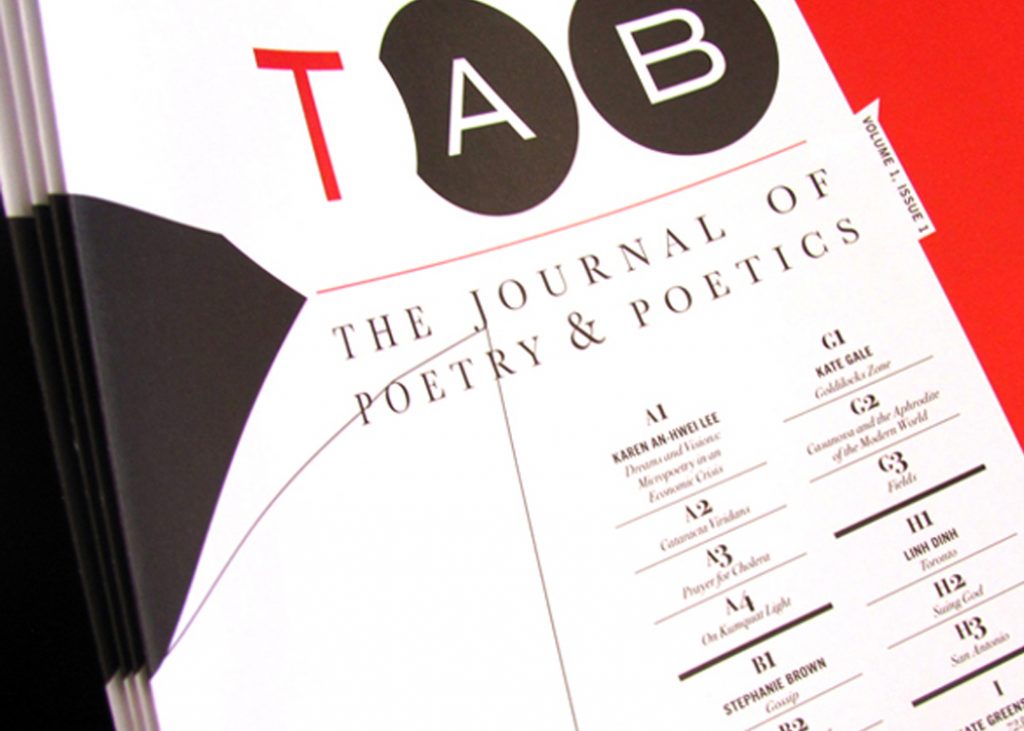
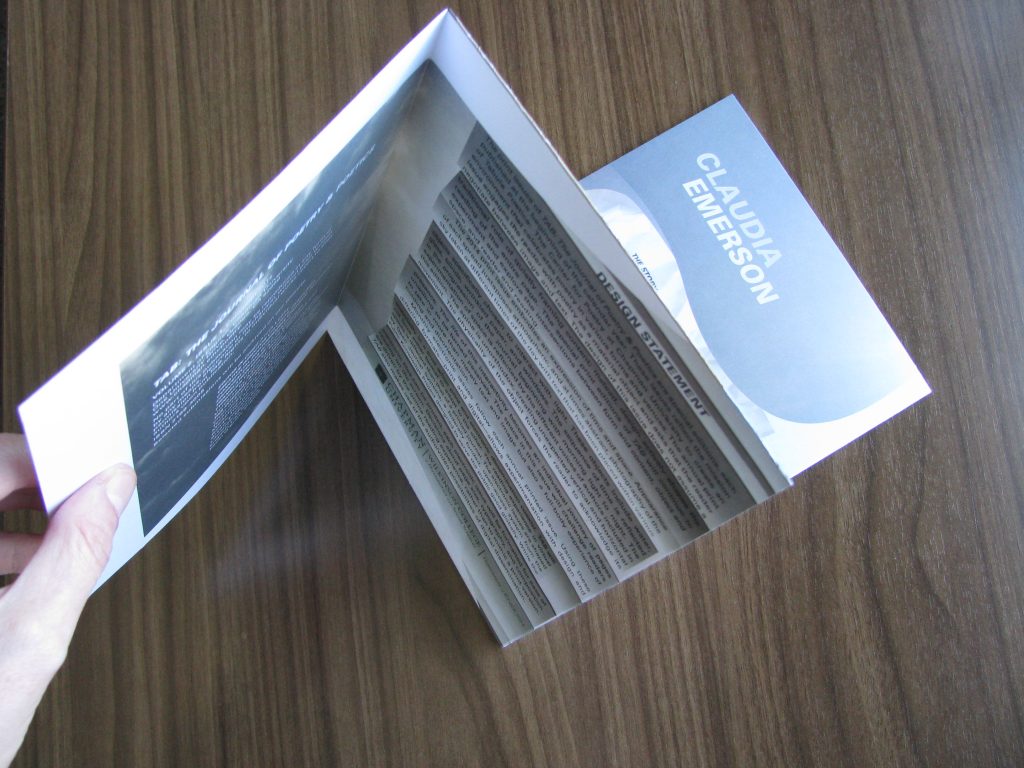
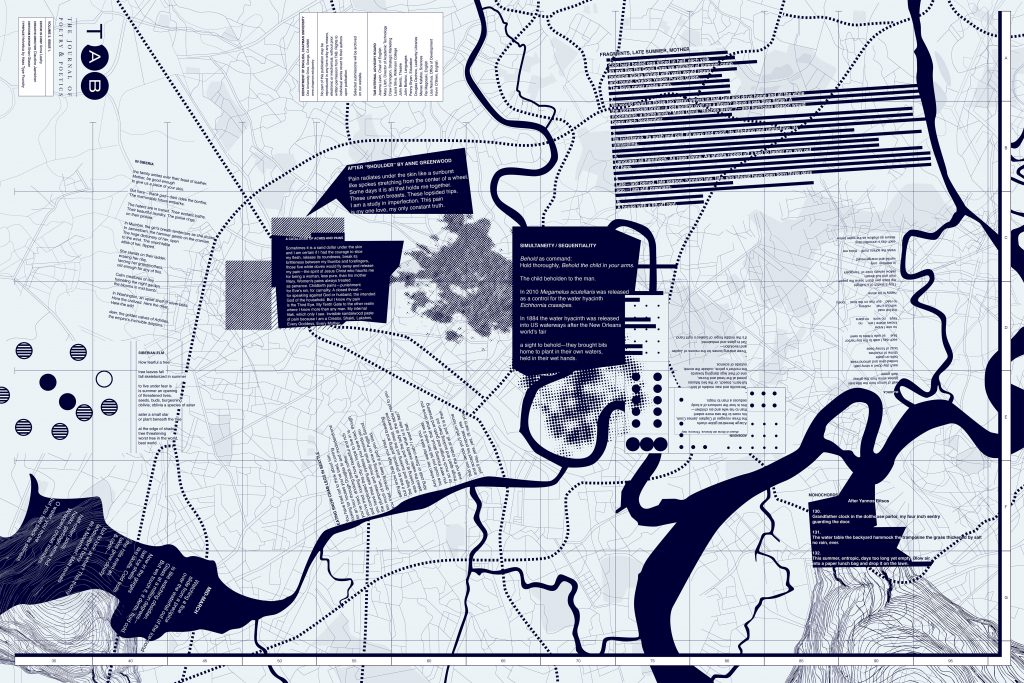
TAB 2015 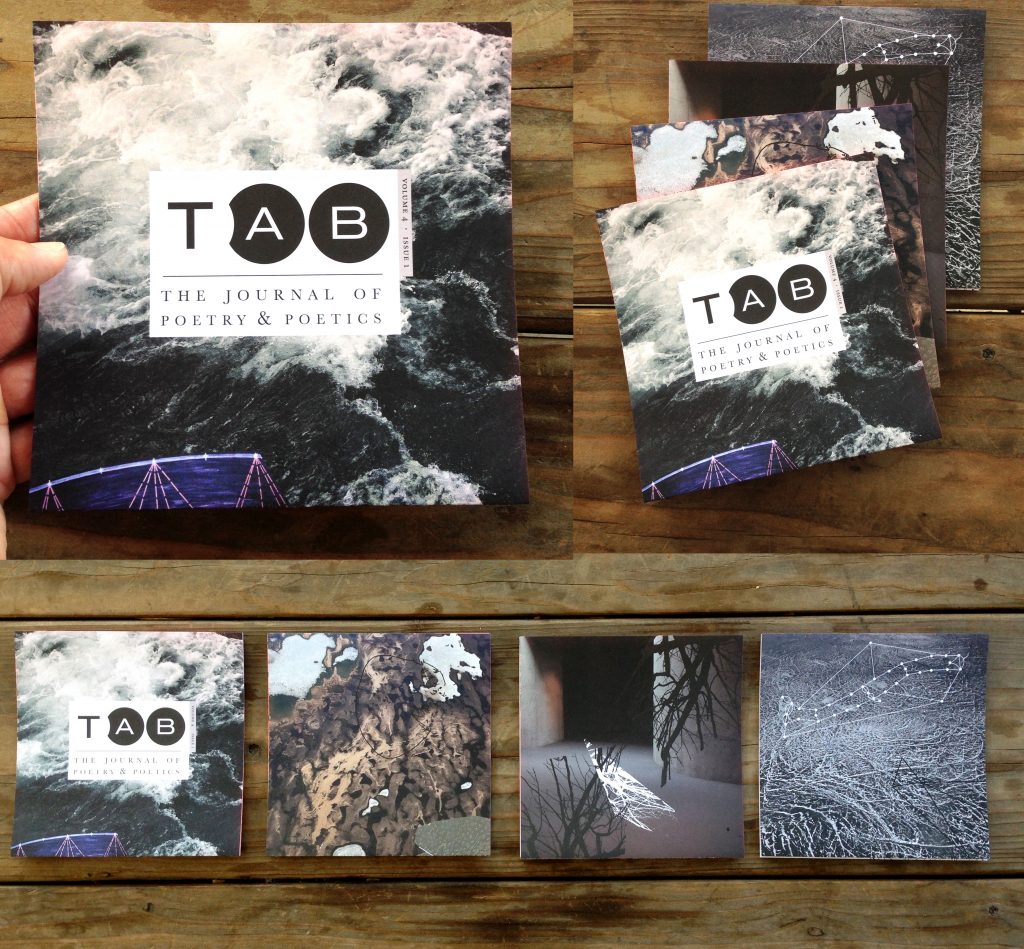
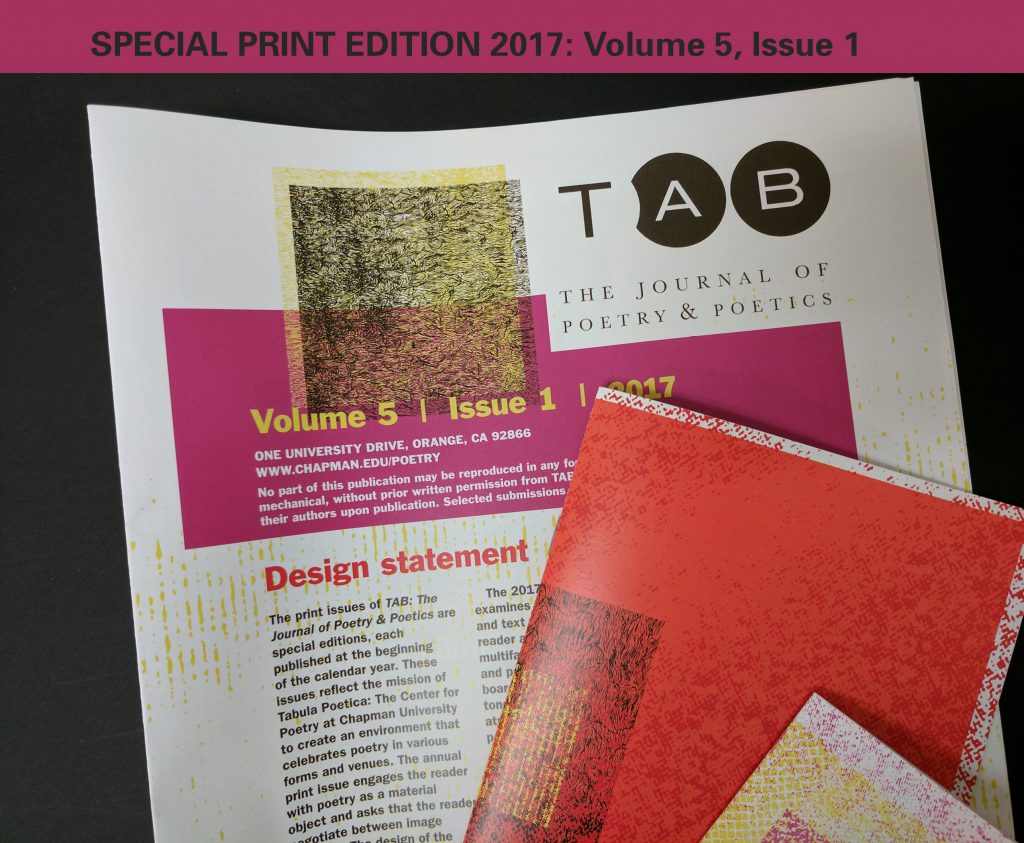
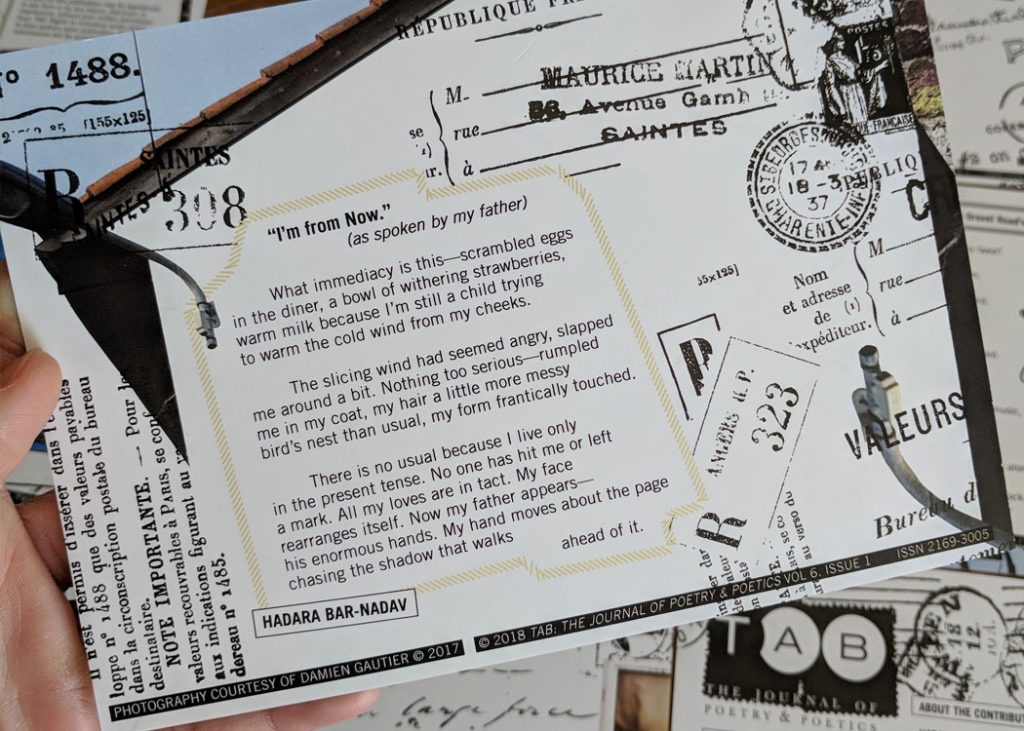
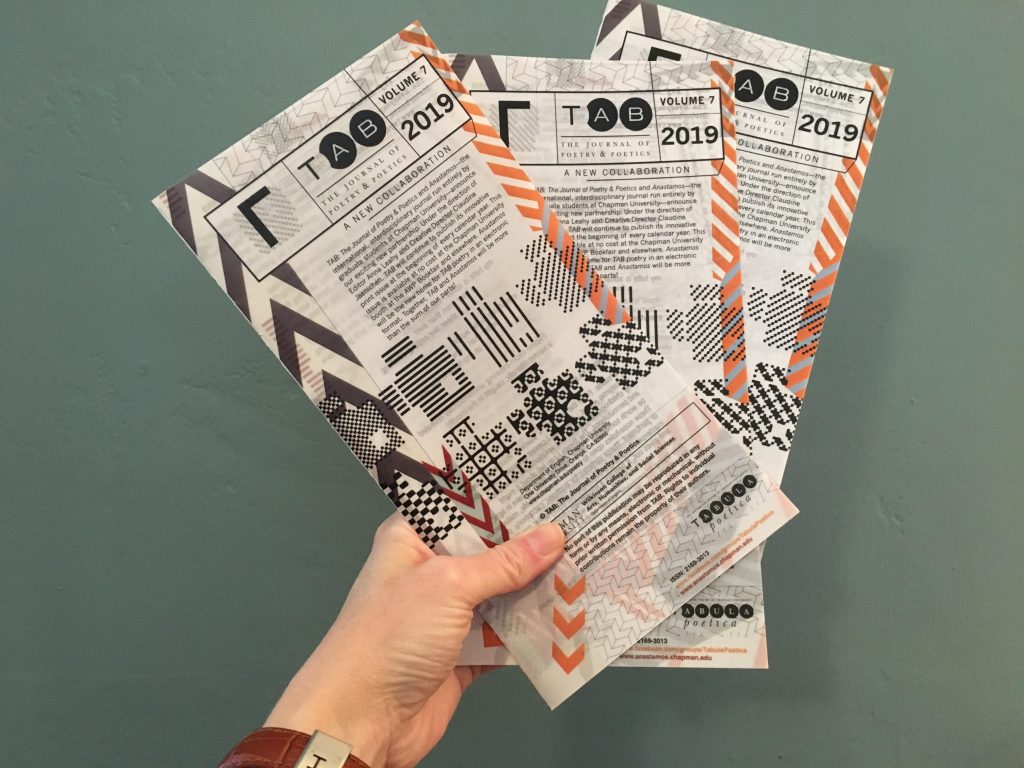
TAB 2019
Of course, we end up with more good poems than we publish, so final decisions involve additional considerations. How will the contents of an issue play off each other—complement, contradict, challenge, talk with, and build upon each other? What does a curated group of poems make together? The 2020 print issue, in fact, can be literally built out of the poems that are its contents.
We also consider how each poem will appear visually in the format Tab Journal has chosen as part of its design constraints. Because we use pdf files instead of blog formatting, the online issues allow for a great deal of agility within the constraint of the screen’s page size and orientation. They’re also downloadable. While we value consistency, we are not tied, for instance, to a set margin for the sake of having a set margin, when a particular poem challenges that aspect of our style guide. Formatting decisions are guided first by accessibility and then by balancing the poem’s aesthetics with the journal’s format.
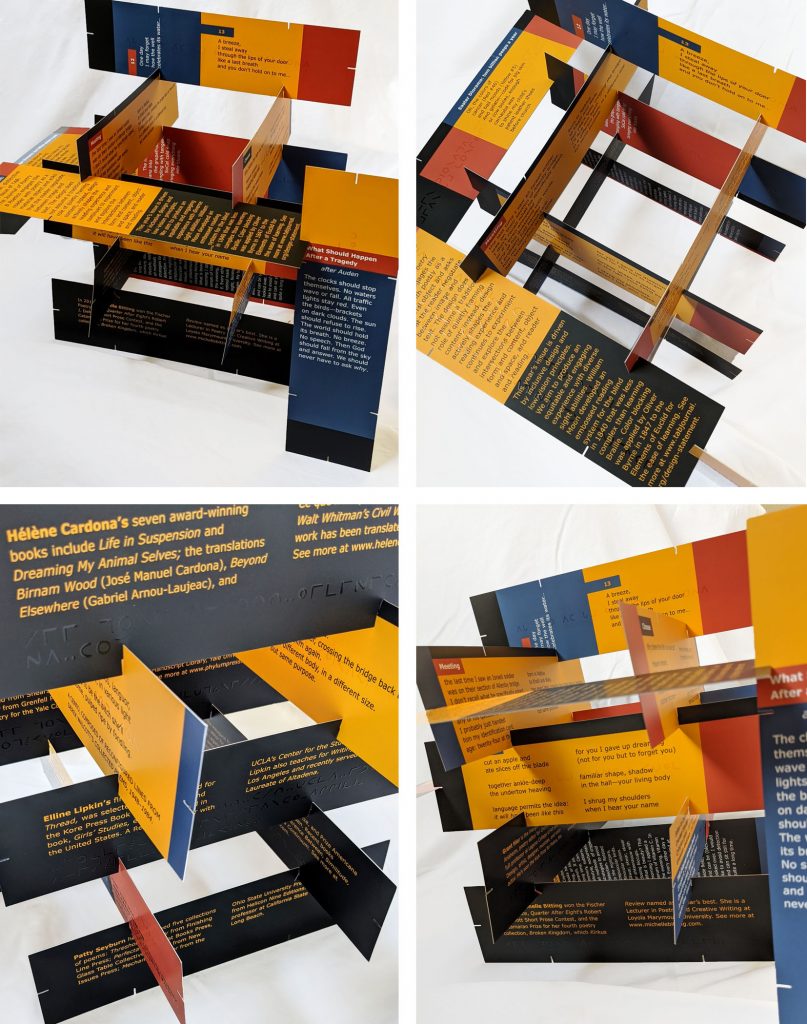
Finally, each year, the Editor and the Creative Director look back at the design and the contents to understand the journal’s trajectory and make changes. We’ve selected the content for this year’s remaining issues, and we’ve now begun that process of looking back over the year. Creating a completely new design for each January print issue forces us to reconsider our assumptions, recognize our strengths and weaknesses, and take new risks.
Tab Journal strives to be a project where poetry meets design in inclusive reading experiences. We read poems with that vision in mind. And we ask you to join us in this reading experience!
